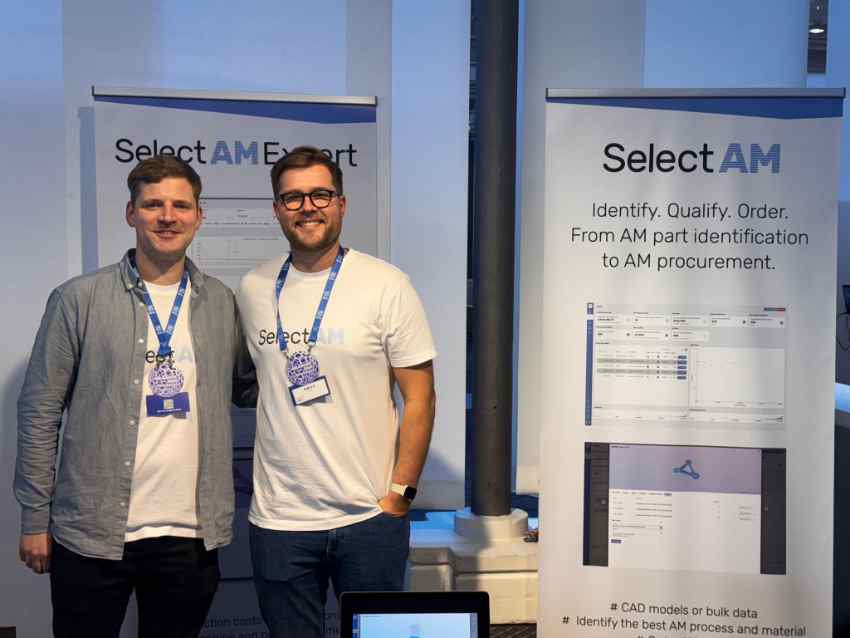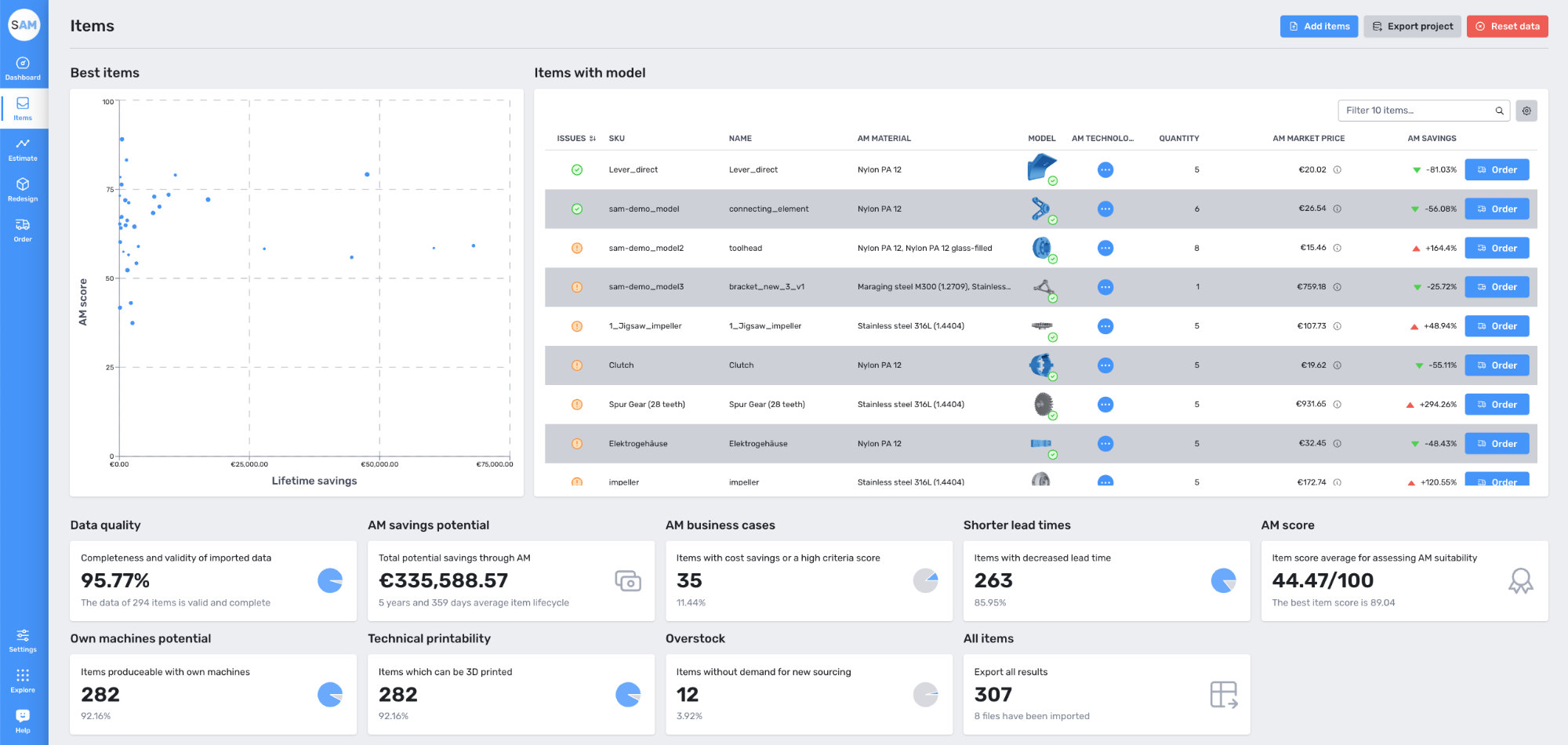SelectAM is a Finnish startup that has roots from Aalto University research. The company offers cutting-edge software and expert consultancy services to empower businesses adopting and optimising additive manufacturing (AM) within their operations. Their focus is on helping you unlock the full potential of AM by identifying the most promising applications, ensuring seamless production/procurement readiness, and establishing efficient AM workflows through automation and data-driven insights.
Interview with Kalle Lepola, CBO at SelectAM.
What are the main areas of activity of the company?
Kalle Lepola: There are a few, so I’ll list them below:
- Part Identification for AM: We offer in-depth analysis of your part inventories to pinpoint components ideally suited for additive manufacturing, even without CAD-files.
- AM Consultancy: Our team of experienced consultants provides expert guidance on AM technology selection, strategic implementation, and integration with your existing manufacturing ecosystem.
- Digital Inventory Management for AM: We help you manage and optimise your digital part libraries for on-demand AM production, decreasing the downtimes and need for warehousing. We’re also doing 2D-drawing data extraction, and 2D to 3D model conversions with our AI features.
- Cost and Time Estimations: We offer powerful simulation tools and services to accurately estimate the costs and lead times associated with your AM processes, enabling informed decision-making and removing the (human) error margins.
- Quotation tools for AM services: We also build automated quotation solutions for our AM service providers, both in-house and external. Meaning that we simulate costs and quotes on a highly detailed level for the machines and auxiliar processes the companies operate.
What’s the news about new products/services?
K.L: We’re constantly adding capabilities into our workflows, and we’ll soon release a fully free version of our solution as well. We believe the biggest hurdles of companies using AM are related to access to information, knowledge, and the complexity of mastering the different technologies – and we want to bring our offering to counter these hurdles closer to the users.
What are the ranges of products/services?
K.L: Our offering revolves around software tools and consultancy projects for various industries. Software capabilities include features such as AM cost calculations, ROI calculations, re-design impact analysis, quotation automation, real-time market prices for your components, and many more. And the consultancy includes for example services like AM Training, Digital Manufacturing readiness building, data extraction and preparation, among others. We always tailor our approach based on the customers situation and goals.
What is the state of the market where you are currently active?
K.L: We operate within the growingly sustainability-oriented and ever-changing manufacturing market. We recognise a significant and growing demand for solutions that simplify the adoption and optimise the implementation of AM technologies, as industries across the board increasingly embrace the potential of AM for everything from prototyping and tooling to full-scale end-part production. The user groups of AM are growing, and companies are starting to get to the heart of the matter of AM’s potential.

What can you tell us about market trends?
K.L: Several key trends are shaping the AM landscape. We are witnessing a shift towards using AM for production-grade parts, moving beyond prototyping. Exciting developments are constantly emerging in new and improved materials, specifically tailored for AM processes and applications. Technological advancements in both hardware and software continue coming as well, leading to faster build speeds, improved accuracy, and a general reductions in costs. Also, we recognise the increasing importance of connecting AM with other manufacturing systems to create automated and seamless workflows, making the AM technologies and workflows an integrated part of companies’ operations – instead of a standalone process.
What are the most innovative products/services marketed?
K.L: Within our portfolio, we consider our AI-powered part identification module within our software platform to be a particularly innovative solution. This module leverages the power of artificial intelligence to analyse 2D-drawings, generating a 3D geometry from it, and efficiently identify optimal AM applications, resulting in significant time and resource savings for our clients. Looking outside of our domain, most impressive advancements are happening around AI-enhanced tools for in-process monitoring, simulation tools, and generative design tools.
What estimations do you have for the beginning of 2025?
K.L: We anticipate AM becoming a mainstream manufacturing process across many industries, producing robust, industrial-grade components. Sophisticated software, like our platform, will be key for managing increasingly complex AM workflows. Success will depend on selecting the right parts for AM, balancing performance, cost, and manufacturability. By the end of 2025, we want to see more companies printing parts that make sense economically, strategically, and environmentally.


